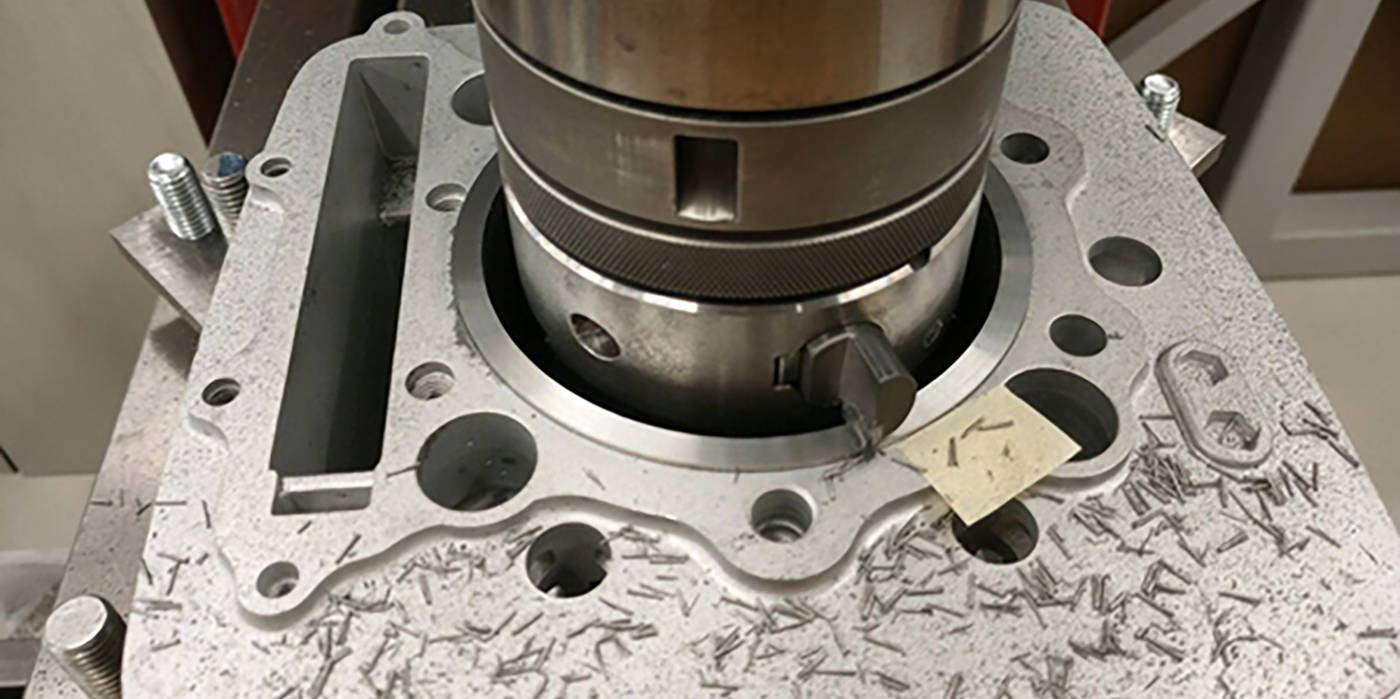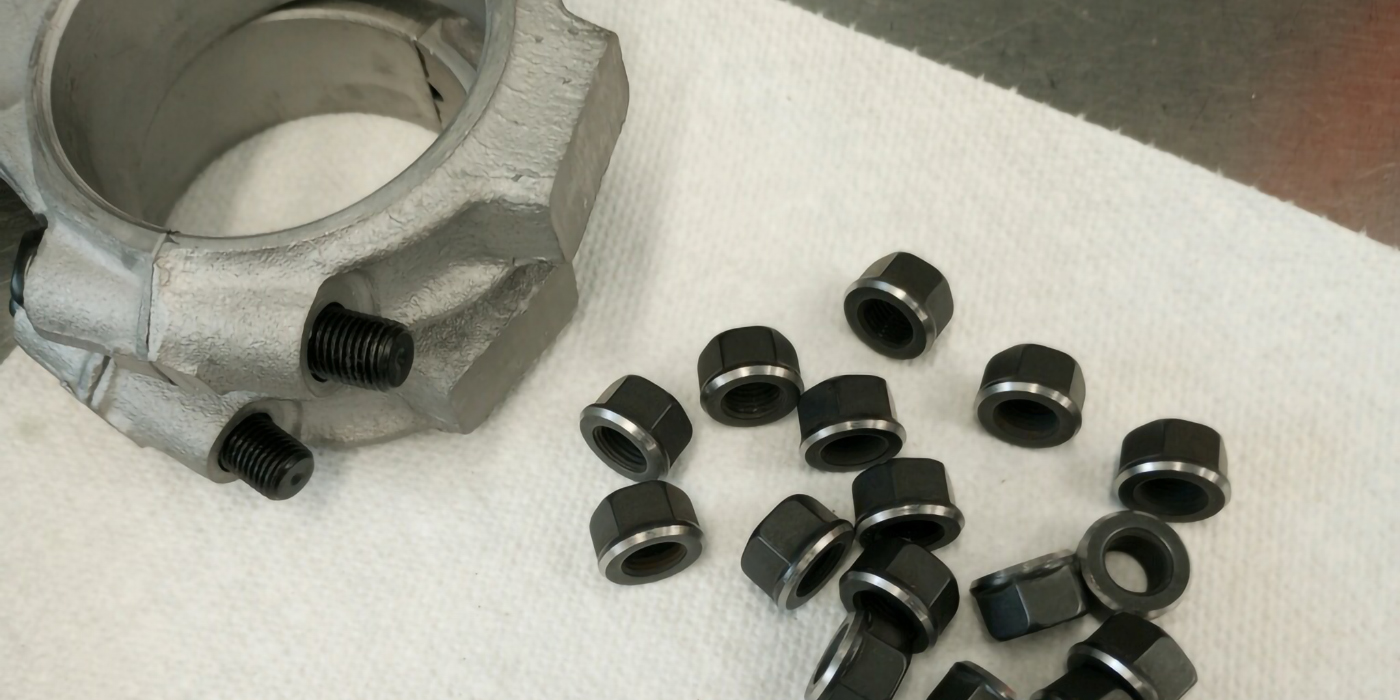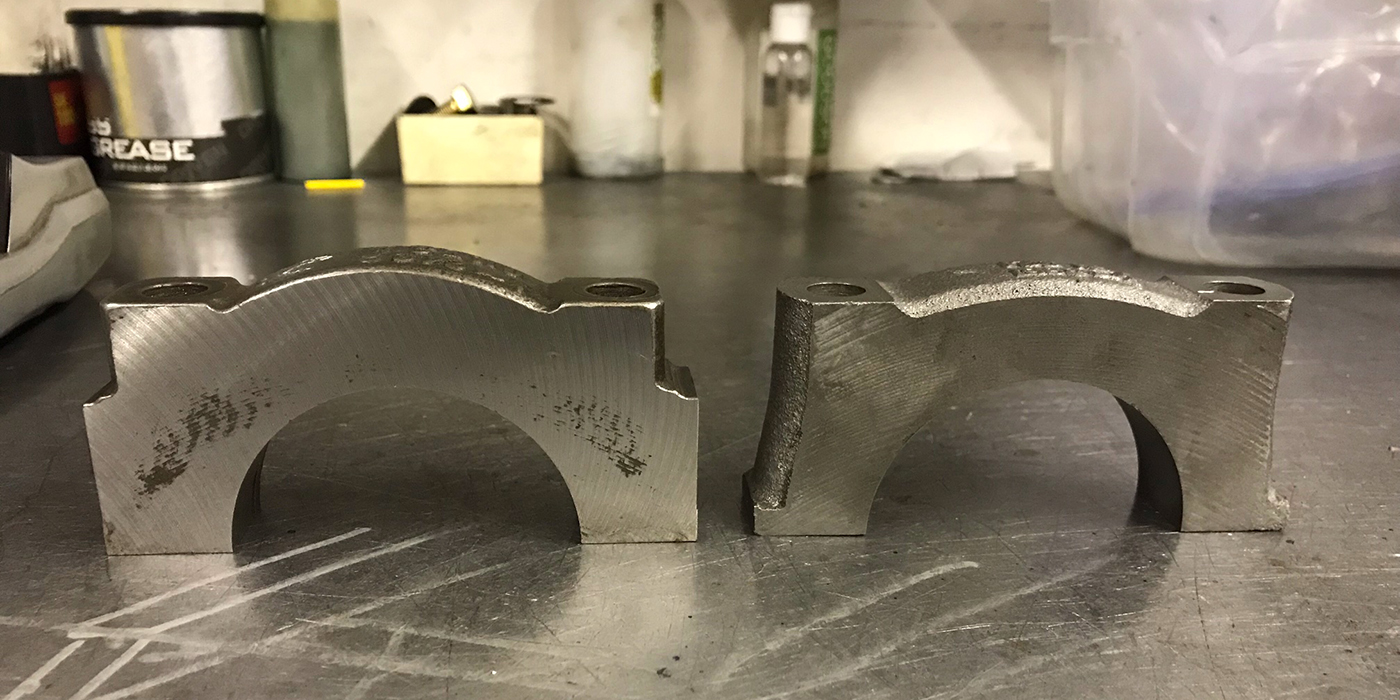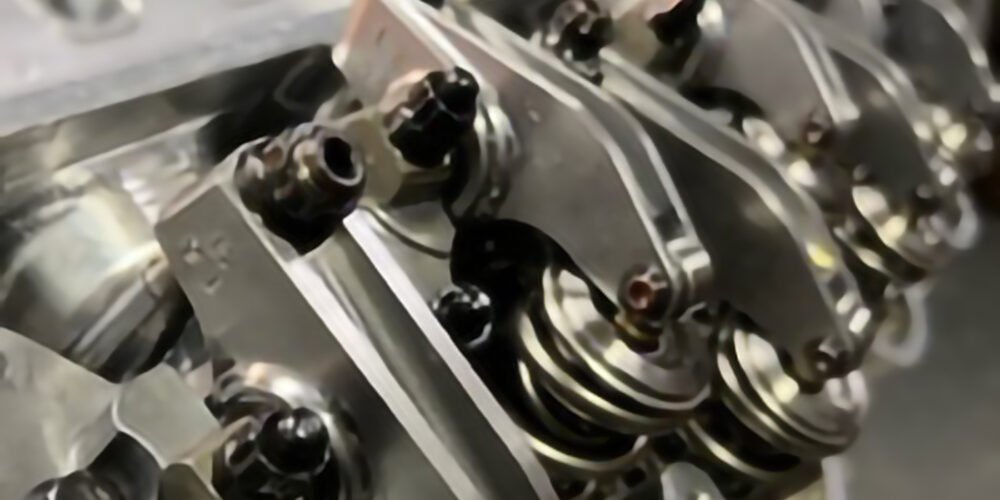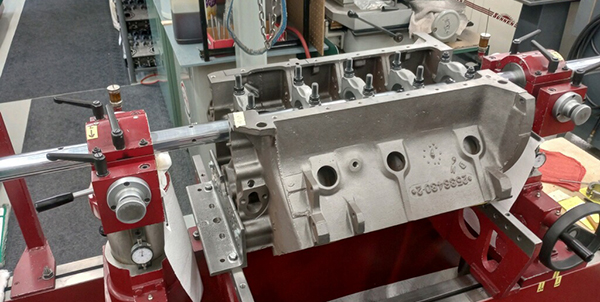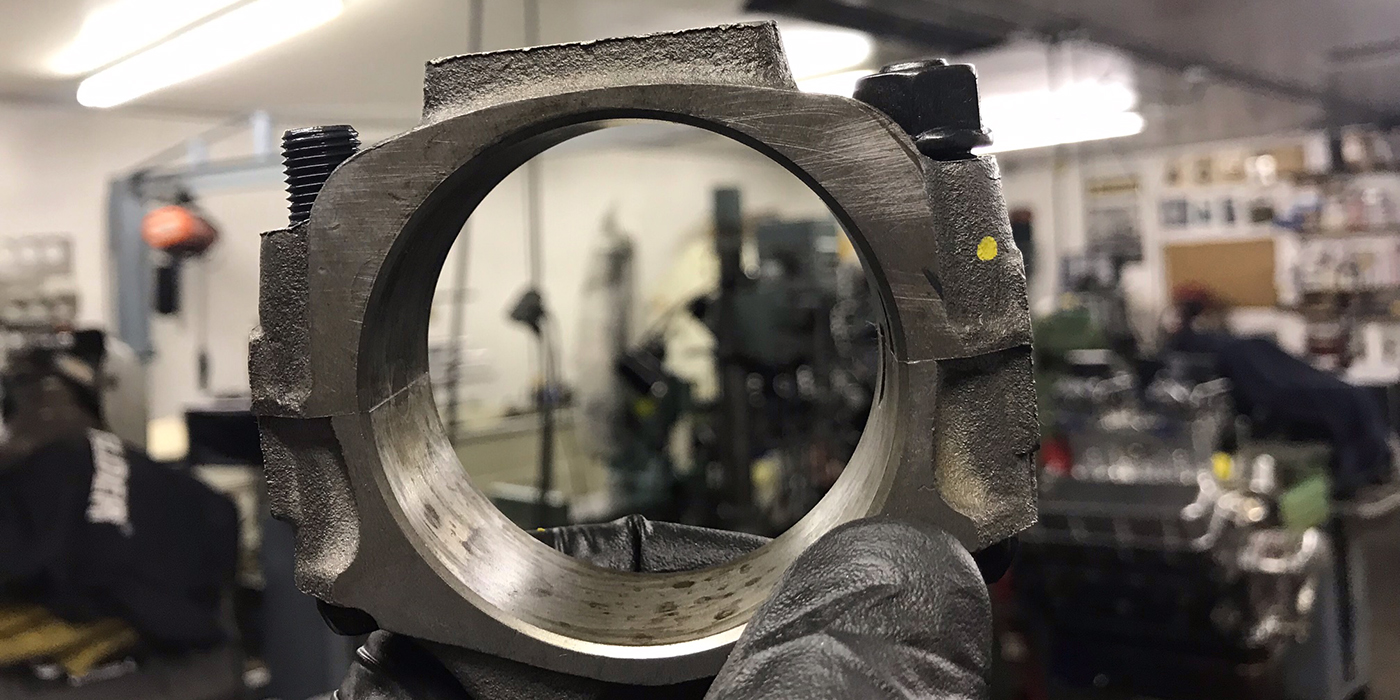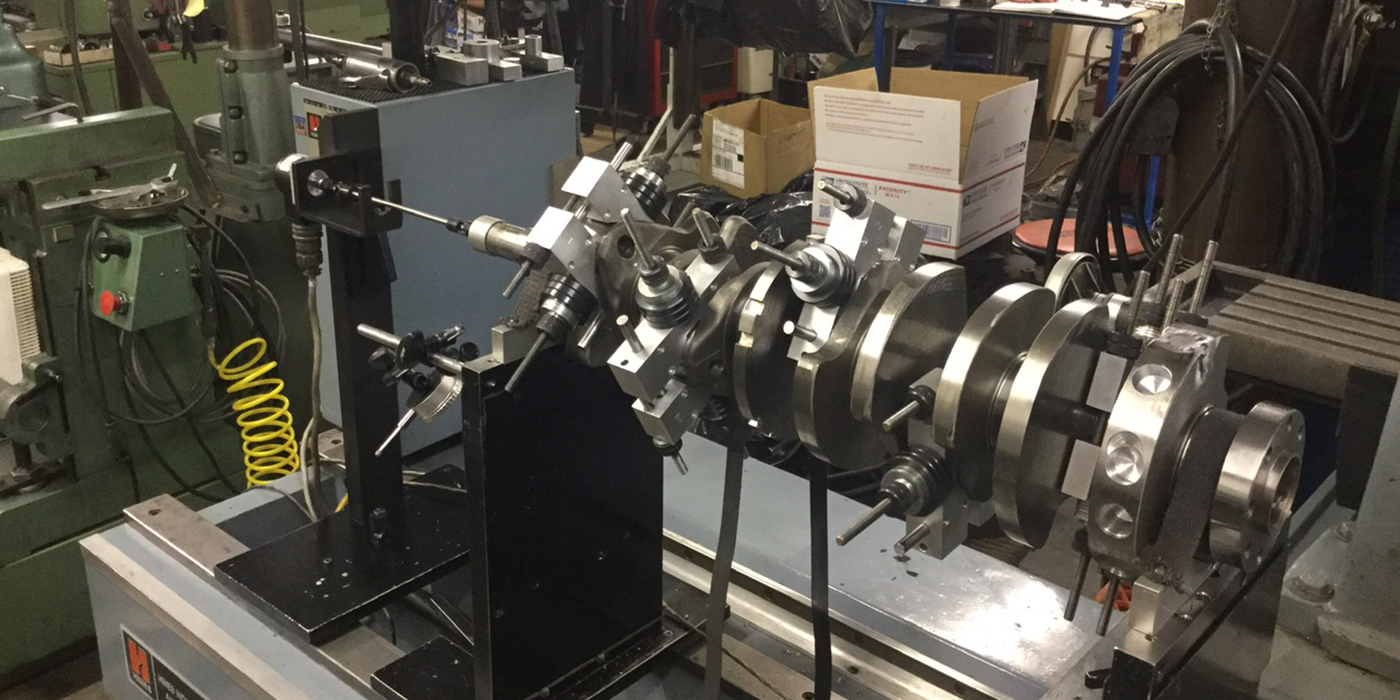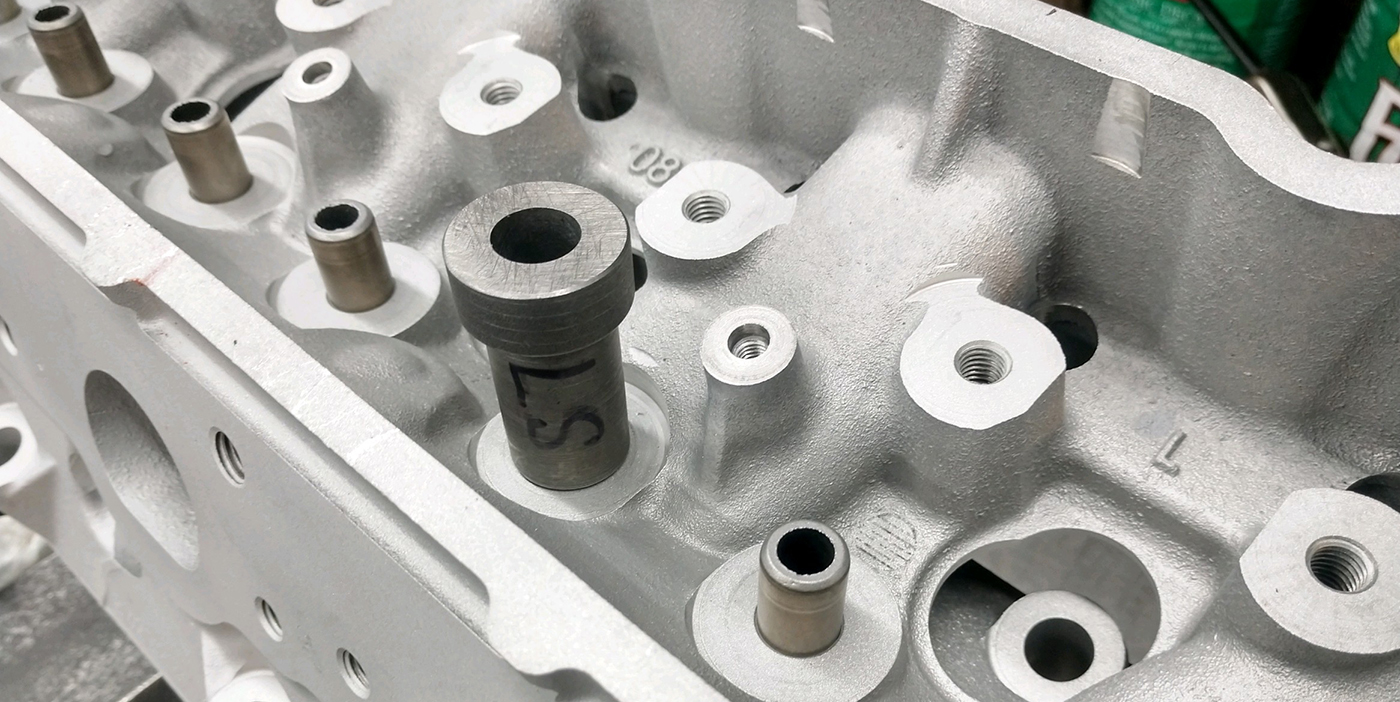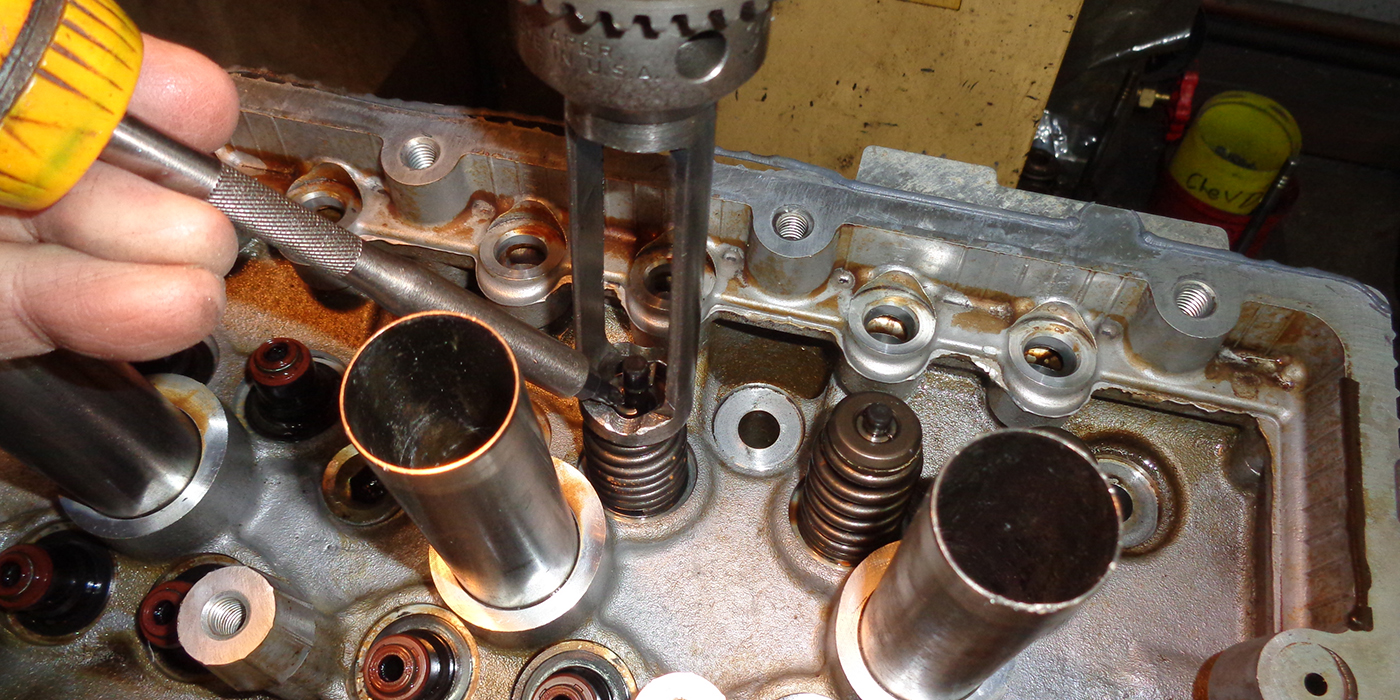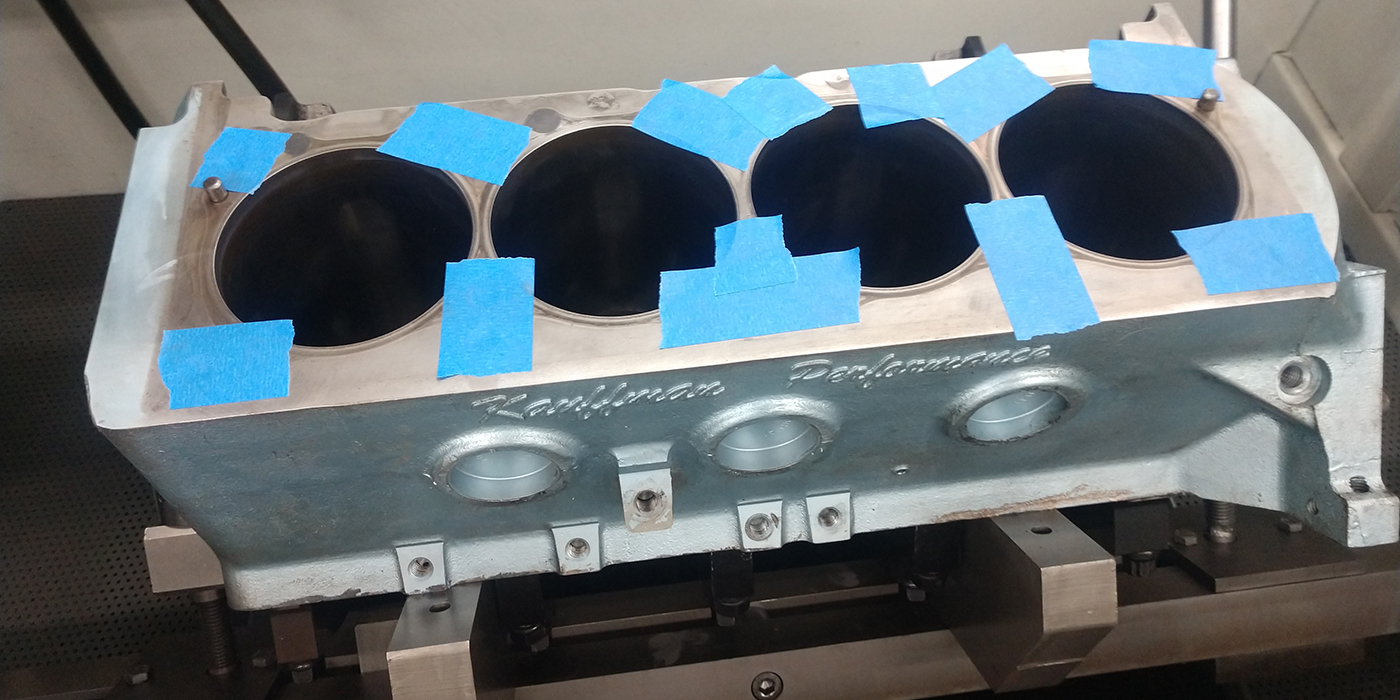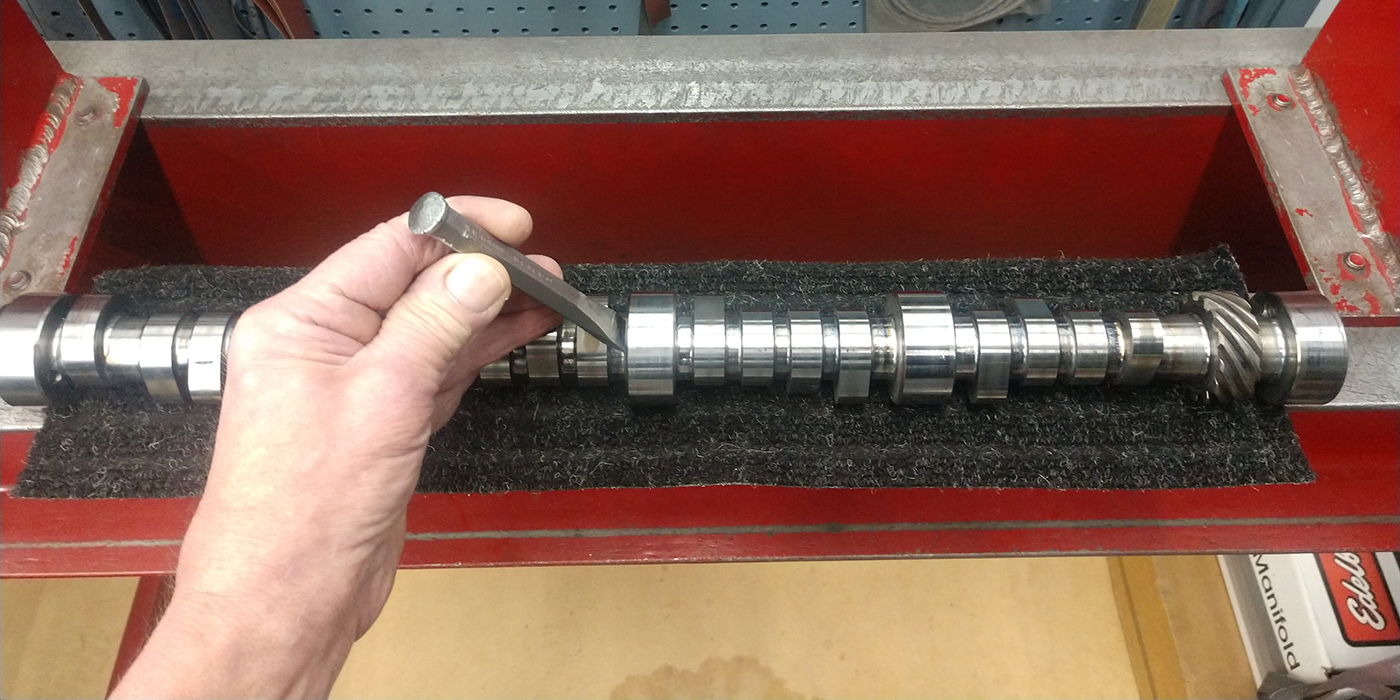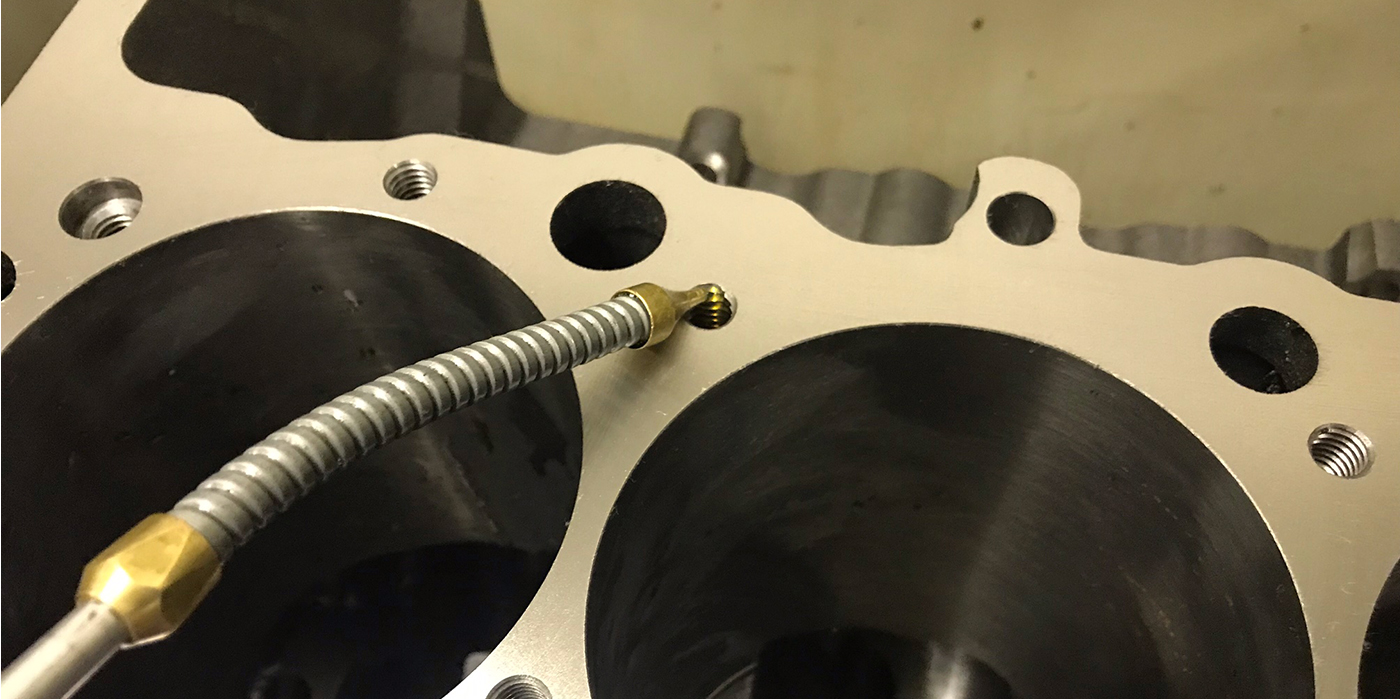Head and Block Surface Prep
Most cast iron V8 heads and/or blocks usually don’t require anything more than a good cleaning. They are not as likely to warp as straight-six or aluminum heads or blocks. But it is unusual to have all the old gasket material wash away in your hot tank. Minimal surface prep is usually (I say always) still necessary. Gasket scrapers are alright if used lightly but can still leave some deep gouges when used recklessly. Abrasive cookies were never intended for gasket material removal, but they are used and we all know what they are capable of doing. I suggest using a standard 3?x 24? 100 grit handheld belt sander belt. A lightly used one is preferred. Get yourself a nice, flat piece of 3/4? plywood and cut it so that it fits tightly into the sanding belt. After the valve job or bore job is done, use the sanding block in long even strokes across the gasket surfaces. This will knock down any high spots or leftover gasket material. Note: you want to sand all the way out past the edges, but don’t let more than a quarter of the block leave the surface, keeping 3/4 of the block on the surface. If you go too far off the edges, they will begin to round off.
Ray Goebel
Engine Rebuilders Warehouse
Dania Beach, FL
‘Trial Bearings’
As we are all aware, when assembling a new combination, there are times when the eng-ine is assembled and disassembled numerous times when trial fitting. Since the engine bearings are part of this process the risk of foreign matter contamination and imbedding is a real world problem.
To eliminate this possibility, I save many of the good condition R&M bearings. I package and label them “for trial use.”
This way when assembling the engine for the final time, I merely check oil clearances and enjoy piece of mind knowing the engine’s final assembly is with new, clean bearings.
Archie Frangoudis
Archie’s Racing Service
Merrimack, NH
Lifter Rotation Check
Zinc, zinc, zinc! Seems like it’s all you hear today. But there can be more to cam and lifter failure than lack of zinc. If the lifters do not rotate you will have a failure. There are a few things that can contribute to this such as dimensional interference between an oversized lifter or a small lifter bore. Possibly not enough crown on a lifter or not enough taper on the camshaft lobe. A core shift in the engine block can cancel either of these out, or debris left in the block that may not be visible during assembly but gets pumped into the lifter bore by oil pressure.
I learned a good way to check if all the lifters are turning. Have a black Sharpie or permanent marker available in your assembly area. After all the pushrods are in and the valves are adjusted run a quick black line across all the push rods. Now when you rotate the engine over a few times you will be able to see rotation in the lifter as the pushrod makes its rotation.
Many installers have argued that they never do immediate, high-idle camshaft break-in. They may have gotten away with it in the past, but today it is extremely important to get the engine up to 2,200 rpm and hold it there for at least 20 minutes. This will get the lifters turning and hopefully help keep the job from coming back with a cam and/or lifter failure.
Dave Sutton
Sterling Engine Parts
Kansas City, MO
 Old Tools Put to Good Use
Old Tools Put to Good Use
I have found a good use for worn out harmonic balancer pullers. When the threads finally go bad in your puller you can use the puller body to clamp odd shaped objects to the milling machine table or in the honing tank.
We can successfully clamp two cylinder blocks securely to a milling machine table using an old harmonic balancer puller body using a clamp stud and nut and a T-slot nut.
Jerry McLain
McLain’s Automotive Machine Shop
Cuba, MO
Zinc Point-Of-Sale
I have a customer in Missouri who sells a lot of oil additive. Ray buys cases of the stuff from me, all because of his Point-Of-Sale (POS) display. Ray says his genius sales idea came to him by mistake. It turns out that he set a case of Hi-Zinc Engine Protector on his counter next to the cash register temporarily. Soon a customer checked-out and said, “Hey, you sell that zinc additive? I need some for this engine.” Ray cut the box open right there on the counter and handed over six bottles; enough for six oil changes. Soon, another customer paid for some block work and asked the same question: “Oh, can I buy ZDDP here?”
Ray now keeps a POS display next to his cash register permanently. He’s experimented with spark plugs, shop towels and hand cleaner but his number one POS is oil additive. Ray says that selling good break-in chemicals does three things:
1) Primes the newly machined engine with the right oil.
2) Keeps the customer from shopping elsewhere.
3) Adds a few bucks to the bottom line.
It worked for him, it will work for you!
Steve Rich
Sterling Bearing, Inc.
Kansas City, MO
Keeper Keepers
Here I go again with some old elementary school ideas that I’m sure you’ve all heard before. I still get calls asking if I can supply one keeper for some obscure antique Jaguar or Ferrari. It’s always nice to get a good belly laugh during the week, and I say thank you all! I’ve been recommending a magnetized sheet metal disassembly table forever but it appears this seems too involved for most. So, instead go to the local hardware store and buy a small doughnut magnet. They cost around a buck. Attach this close to the jaws on your spring compressor with some mechanics wire. While at the store also get a short piece of 2? diameter PVC pipe, threaded on at least one end. Get a glue-on PVC cap for one side and a threaded cap for the other end. Drill as many 1/8? holes in both caps as you like. As you remove the keepers that are sticking to your spring compressor magnet, deposit these into the PVC holder. (It’s always a good idea to count the keepers before cleaning up that station). Now screw the cap on the PVC holder and toss it into the tumbler with the rest of the parts. Voila!
Ray Goebel
Engine Rebuilders Warehouse
Dania Beach, FL
Engine Builder Shop Solutions is sponsored by Engine Pro,
a consortium of 14 engine parts specialist WDs operating 33 branch
locations serving engine builders/rebuilders across the U.S. Shop
Solutions published in each issue of Engine Builder Magazine are
awarded a $100 Visa Gift Card. Winners will be chosen by
the staff of Engine Builder Magazine and the Engine Pro Technical
Committee.
To submit a Shop Solution simply mail your entry
to Engine Builder Magazine, Shop Solutions, 3550 Embassy Parkway,
Akron, OH 44333; or email to Shop [email protected]. Shop
Solutions may also be emailed to [email protected].You must include
your name, shop name, shop address and shop telephone number. Submitted
Shop Solutions not published will be kept on file and reevaluated for
publication with each month’s new entries. If you include your email
address you will be emailed notification of publication if your Shop
Solution is chosen.


